Who are the leading Black fashion designers and black-owned luxury fashion brands you need to know now? We deliberately waited until Black History Month ended because we want to celebrate talented members of the African Diaspora all year, all the time! Our correspondent Julie Chang Murphy profiles 9 top Black fashion designers you need to know now. Happy shopping!
Editor’s note: We originally published this piece in March 2019, and we are running it again in light of recent developments and the ongoing urgent need to support the black community.
luxury fashion and race in the spotlight
With the spate of racially-insensitive (or maybe just plain racist) faux pas committed by some of the world’s most influential and prominent luxury houses (Burberry, Gucci, and Prada, we’re looking at you VERY disapprovingly), there has been a renewed call for more diversity and awareness in the fashion industry.
[white_box]Join our community
For access to insider ideas and information on the world of luxury, sign up for our Dandelion Chandelier newsletter. And see luxury in a new light.
sign up now >
[/white_box]
On social media, the backlash to the episodes at each of these three brands was swift and unyielding. As a result, all three have issued apologies. And pulled the offending designs, advertising and inventory from their collections.
Gucci went a step further to announce that the company would be increasing its diversity hiring. It’s adding a new global director for diversity and inclusion, and five new designers of color to its Rome office.
Nine top black fashion designers leading the industry forward
That’s all great. But while we look forward to the day when there’s significantly greater diversity in the design studio, in the boardroom, and on the runway, we want to celebrate those who are making it happen right now.
A cadre of black designers is bringing authentic substance and style to the industry. Though their numbers are not nearly enough, we’re holding up 9 luminaries as a shining example of what real diversity and inclusion look like.
These designers are doing their part to make the industry more inclusive, with their “outsider” backgrounds and frames of reference. And it is their collective visions and brands that are helping keep high fashion culturally relevant, inspiring, and undeniably beautiful.
[white_box]Related Post
smart chic tees right now to support black lives matter
read more >
[/white_box]
top Black fashion designers you need to know now
1. Virgil Abloh: Off-White/Louis Vuitton Menswear
Virgil Abloh has been enjoying a well-deserved and meteoric rise in the fashion industry these past few years. This Midwestern-born son of two Ghanian immigrants is a trained architect. He started out as a collaborator with Kanye West, officially becoming his creative consultant in 2010.
Abloh realized his vision of “adding an intellectual layer” to streetwear when he created his label, Off-White, in 2013. Capitalizing on youth street culture and hypebeast lifestyle, Off-White is a runaway success. Its iconic diagonal line graphics, luxurious fabrics, and streetwear silhouettes have been picked by luxury department stores like Barneys New York and Neiman Marcus, as well as some leading independent specialty stores. Abloh designed a break-though retail space in SoHo about 18 months ago that is a must-see for its inventiveness alone.
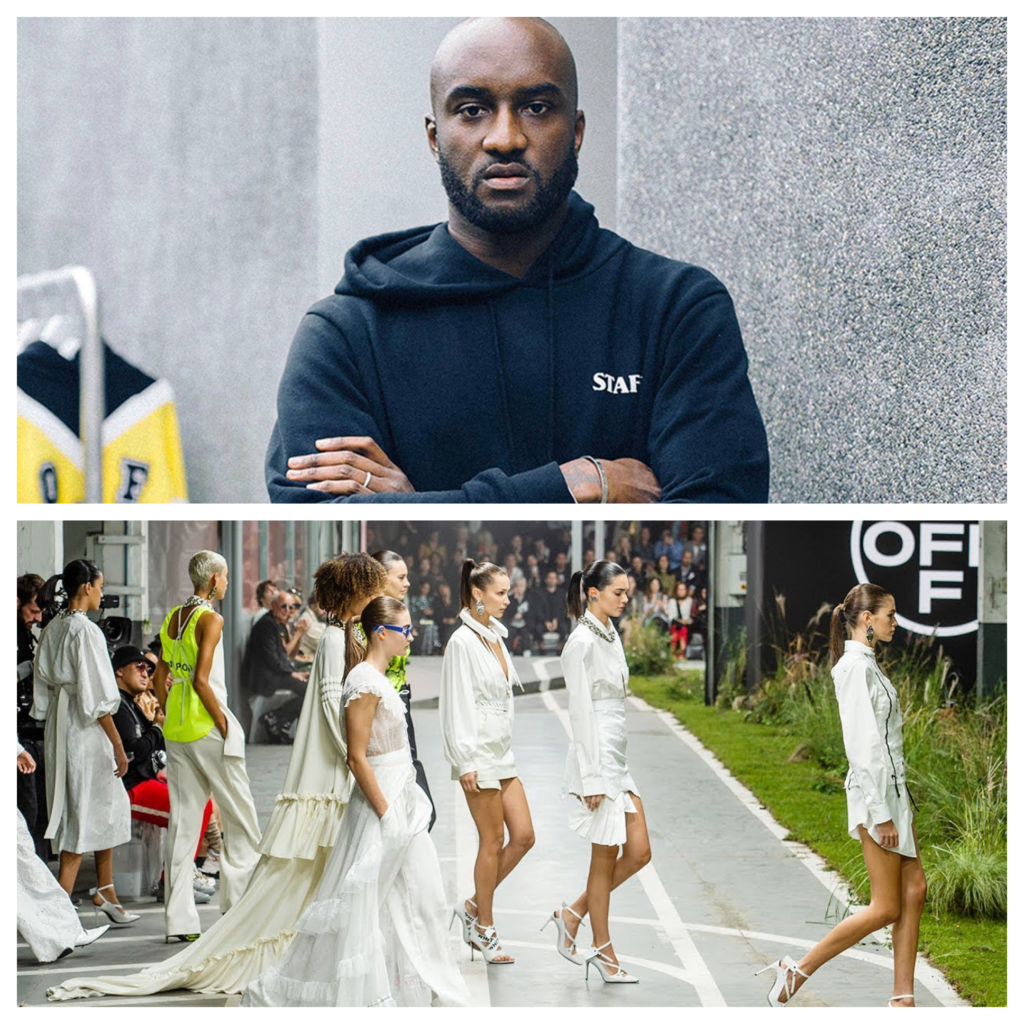
Top Black fashion designers and black-owned luxury fashion brands: Virgil Abloh. Courtesy Photos.
ascending to the top
In 2018, Abloh achieved his dream of becoming the head of a major luxury house when he was appointed with much fanfare to the post of Artistic Director of Menswear at Louis Vuitton. The designer once said: “My motivation is, in a part, a bit of angst that comes from feeling like I don’t belong; that our generation doesn’t belong. I made a conscious decision that I wasn’t just going to be a consumer; that at least one of us would appear at the end of a Parisian runway.”
Mission accomplished. Abloh is going from strength to strength this year. This June, the Museum of Contemporary Art Chicago will present Virgil Abloh: “Figures of Speech,” the first museum exhibition devoted to his work. A glittering gala on June 8, 2019 at the museum will celebrate the opening of the exhibit. Tickets for both the gala and the exhibit are on sale now, dear reader. You might want to get yours now. It’s going to be a Thing this summer, for sure.
[white_box]Related Post
what are the most insightful films about black lives?
read more >
[/white_box]
2. Tracy Reese
Tracy Reese hardly needs an introduction. Hailing from Detroit and a graduate of the Parsons School of Design, she has been a bright light in the fashion industry for more than 20 years with her popular eponymous line and diffusion line, Plenty. Chances are you have one of her bold and flattering dresses in your closet (happily, we have more than one!)
Reese has always been particularly attuned to the needs of a modern woman. In an interview at the Museum at FIT’s exhibition, “Black Fashion Designers,” she said: “I think a lot of the powers that be still think that a man has better ideas of how a woman should dress than a woman does. And I think that most women designers are really thinking about function and flattering, and they’re not as much in fantasy zone.”
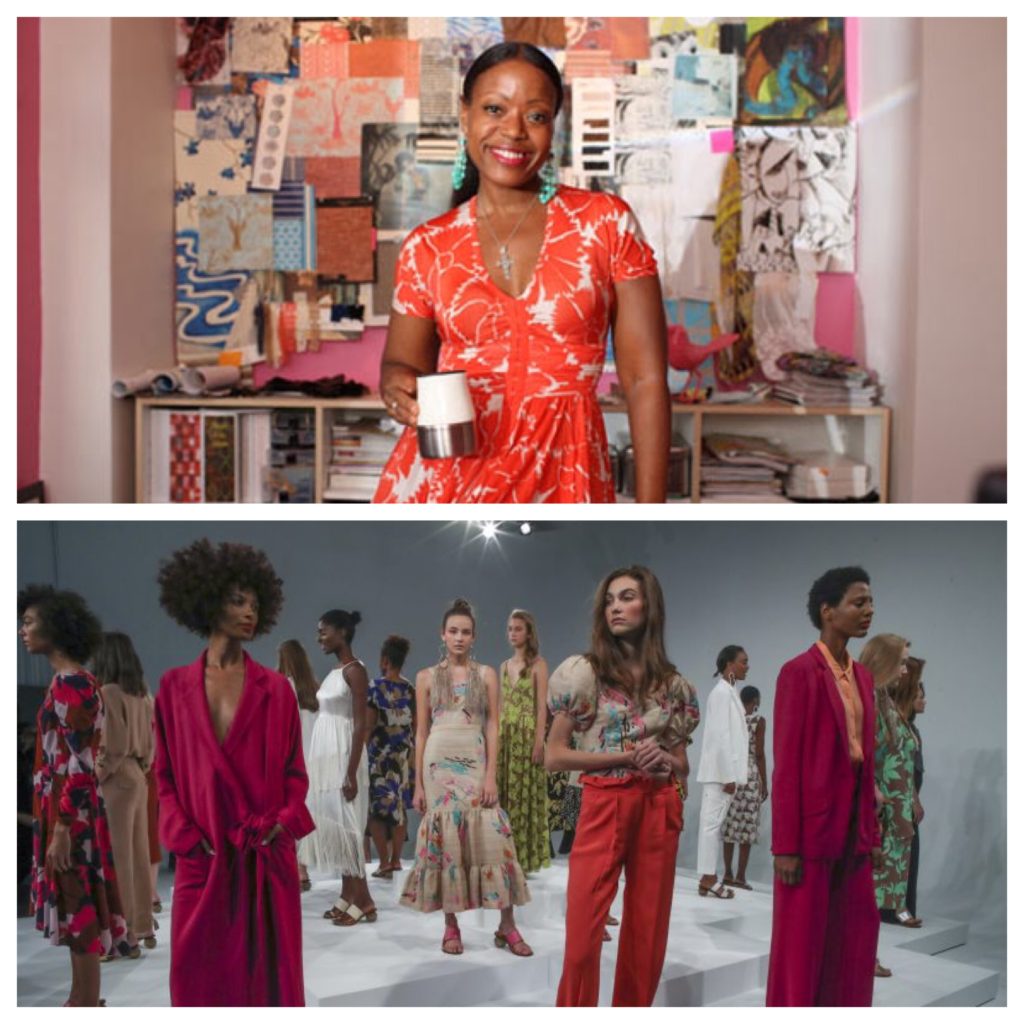
Top Black fashion designers and black-owned luxury fashion brands: Tracy Reese. Courtesy Photos.
Reese has also been one of the few consistent designers to show her clothes at Fashion Week on non-traditional models of different ethnicities, sizes and ages. The longevity of her signature optimistic and simply pretty style in the fickle world of fashion prove she knows what women want. Small wonder that former First Lady Michelle Obama has worn Tracy Reese on several occasions, both during and after her time at the White House.
[white_box]Related Post
what are the best cookbooks from black chefs right now?
read more >
[/white_box]
3. Kerby Jean-Raymond – Pyer Moss
Kerby Jean-Raymond, whose heritage is Haitian-American, is seemingly another “overnight success” story. Establishing his line, Pyer Moss, to much acclaim in 2015, he won the CFDA/Vogue Fashion Fund award just three years later.
In fact, he’s been working in the industry since he was a 15-year old student at The High School of Fashion Industries in Manhattan. He worked as a designer for Kay Unger, Marchesa, Marc Jacobs, and Theory.
Jean-Raymond considers his brand an art project and uses high fashion as a platform for storytelling and social and political commentary.
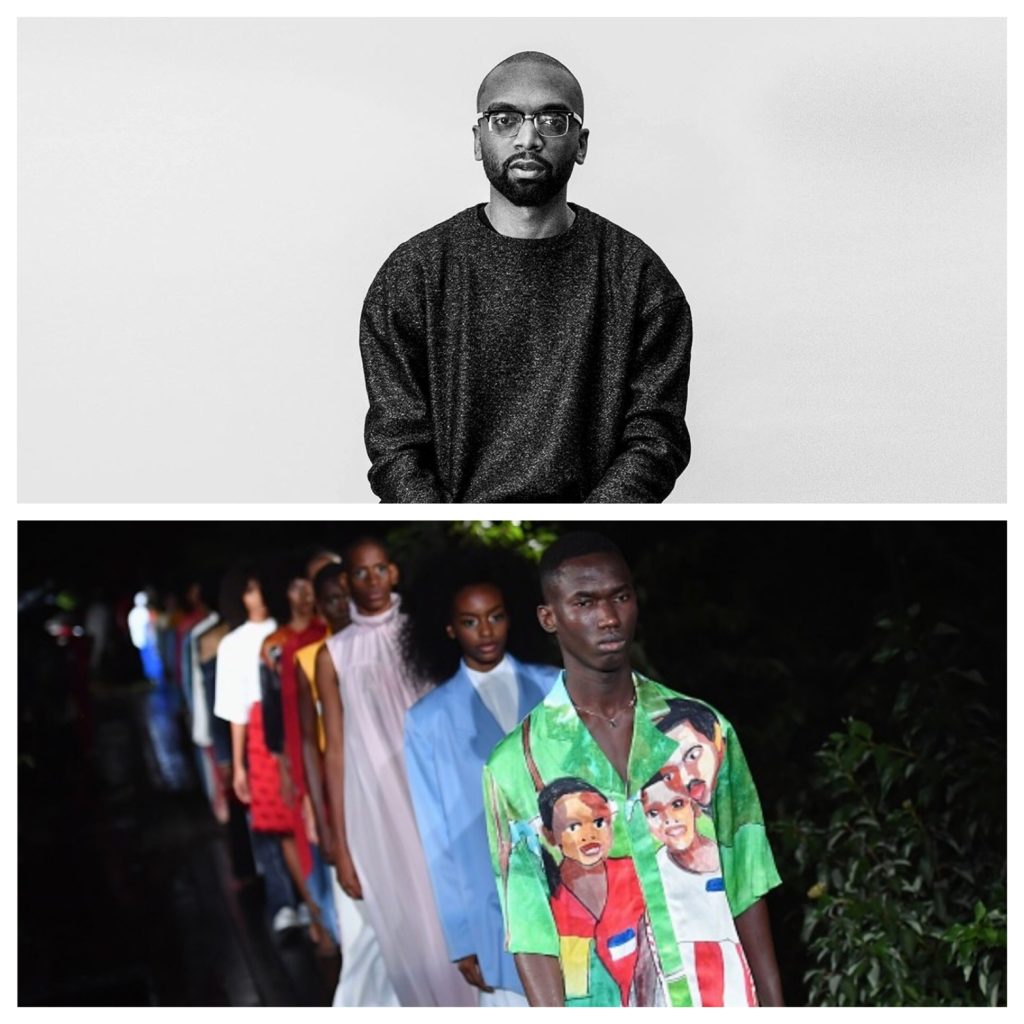
Top Black fashion designers and black-owned luxury fashion brands: Kerby Jean-Raymond of Pyer Moss.
In his first collections, he addressed police brutality and the Black Lives Matter movement. Last year, his line was an unapologetic celebration and promotion of black culture. His Fall-Winter 2018 collection shined a light on black cowboys– figures who were often erased from the whitewashed narrative of the American wild west.
Jean-Raymond’s Spring 2019 collection introduced the ostensibly radical concept of “black people doing ordinary things.” He commissioned artist Derrick Adams to create 11 paintings, many of which prominently feature black fathers and children. Jean-Raymond then translated his art into effortless and sophisticated silhouettes.
The incredibly talented designer previously stated that he “didn’t feel like there was a place for me in fashion, so I never spoke up” is speaking up now. And we’re all listening.
[white_box]Related Post
the best black-owned luxury cosmetics brands right now
read more >
[/white_box]
4. Carly Cushnie
Carly Cushnie, a London native of Jamaican descent who is now based in New York, was half of the luxury brand Cushnie et Ochs for a decade. That partnership ended in 2018. Luckily for us, Cushnie is continuing to operate the brand. Known for its feminine, body-conscious and minimalist designs, the work will go forward under her name.
Cushnie’s first solo show for Spring 2019 was inspired by her Caribbean roots and muse, Sade. Models representing the full human spectrum in size and race were sent down the runway in saturated, tropical colors, luxe beaded and mesh textures, and big, gold hoop earrings.
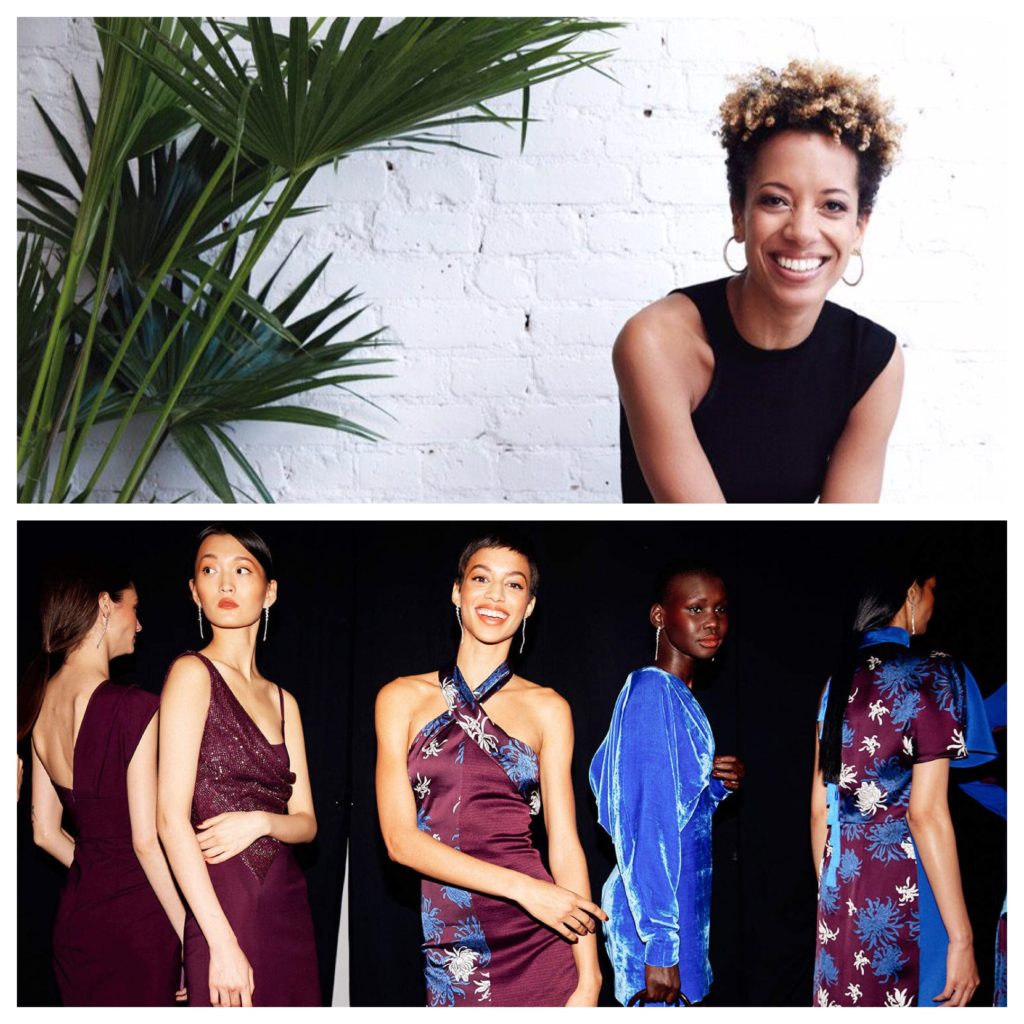
Leading Black fashion designers: Carly Cushnie. Courtesy Photos.
As one of only a handful of successful black women in designer fashion, Cushnie acknowledges her unique responsibility. “Ever since I was young I wanted to be a fashion designer, but there weren’t really many or any role models I could really aspire to in the space.”
To ensure that the next generation has a role model, the designer has partnered with the Lower East Side Girls Club as a mentor, “because there are so few women like me who have the opportunity to be able to give back, and to be an example, as a woman of color.”
That’s some serious Black Girl Magic going on right there.
[white_box]Related Post
the best books right now about black lives and race in America
read more >
[/white_box]
5. Olivier Rousteing – Balmain
Olivier Rousteing is a French phenom. At the age of 25, in 2011 he was chosen to helm the French fashion house, Balmain.
He has since transformed Balmain into a global brand and household name, thanks in part to his collaborations and partnerships with American icons like Beyonce and Kim Kardashian. Beyonce’s talent speaks for itself. No matter what you think of the latter, Rousteing is inspired by her as a strong, modern woman, “representing the new world and the new family.” As a mixed-race orphan, adopted by white parents from an orphanage in France, this is a particularly poignant statement.
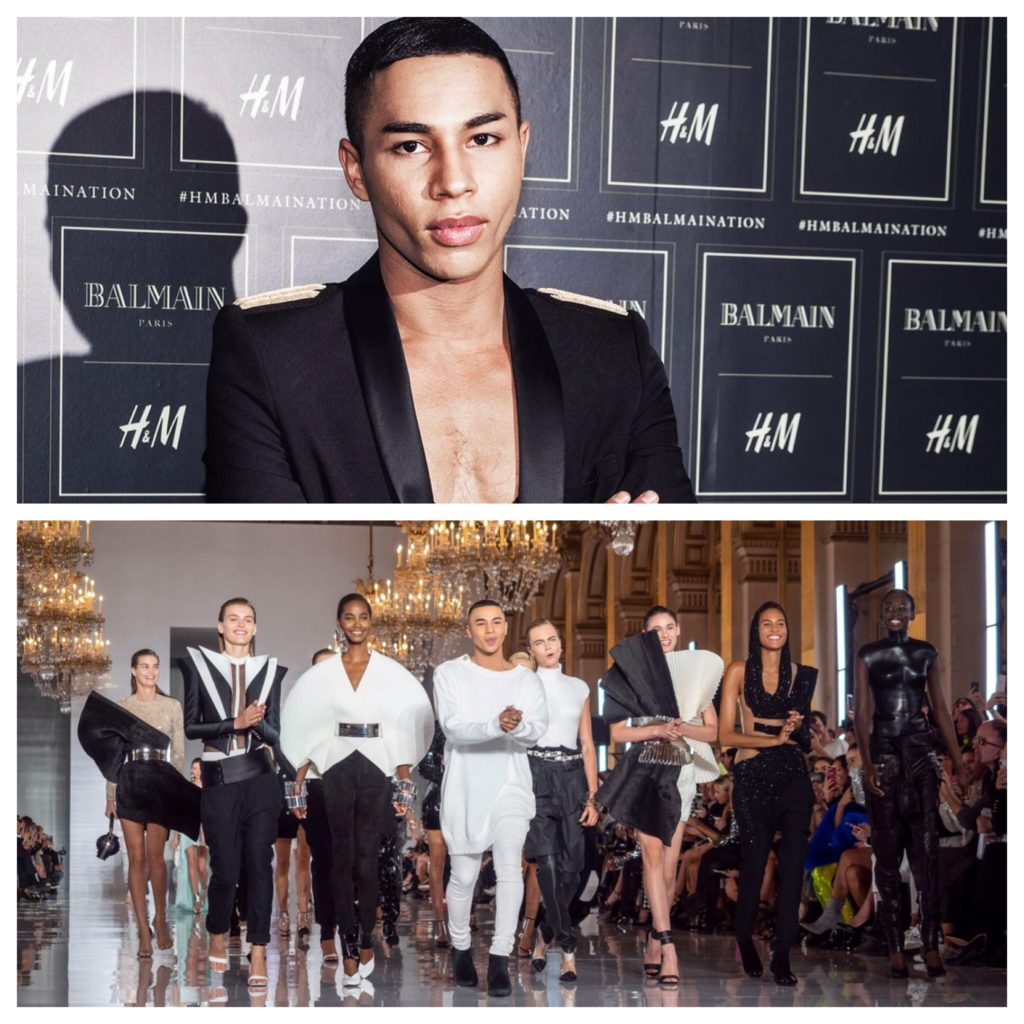
Leading Black fashion designers: Olivier Rousteing of Balmain. Courtesy Photos.
Blurring the lines between pop culture and the world of luxury fashion, Rousteing’s infuses Balmain’s history of craftsmanship with details. He creates a modern-Baroque style that is edgy, embellished and instantly recognizable as that of the “Balmain Army.” According to Vogue, sales have doubled nearly every year under his tenure.
But despite his obvious talent and much-admired face (every article about him mentions his cheekbones! His lips!), his ascension to the upper echelons of high fashion was not always welcomed. As Rousteing recalls of the early critics, “People were like- Oh my god! He’s a minority taking over a French House.” We’re betting the brand’s owners are feeling grateful now. We know we are.
6. Stella Jean
A Haitian-Italian designer, Stella Jean stated in an interview with Essence that she has a “fundamental need to convey a new concept of multiculturalism.”
Her spirited designs merge traditional Italian craftsmanship with cross-cultural references. The end result is often a gorgeous melange of bold prints, colors and pattern mixing. Her happy-looking clothes belie the often-serious themes behind them.
a new take on the Grand Tour
Take, for example, her Fall-Winter 2019 collection, just showcased in Milan this month. It was a re-envisioning of the European grand tour commonly taken by aristocrats during the 18th and 19th century. In Jean’s version, the nomadic lady starts her tour in French Polynesia and Haiti and arrives in Old Europe.
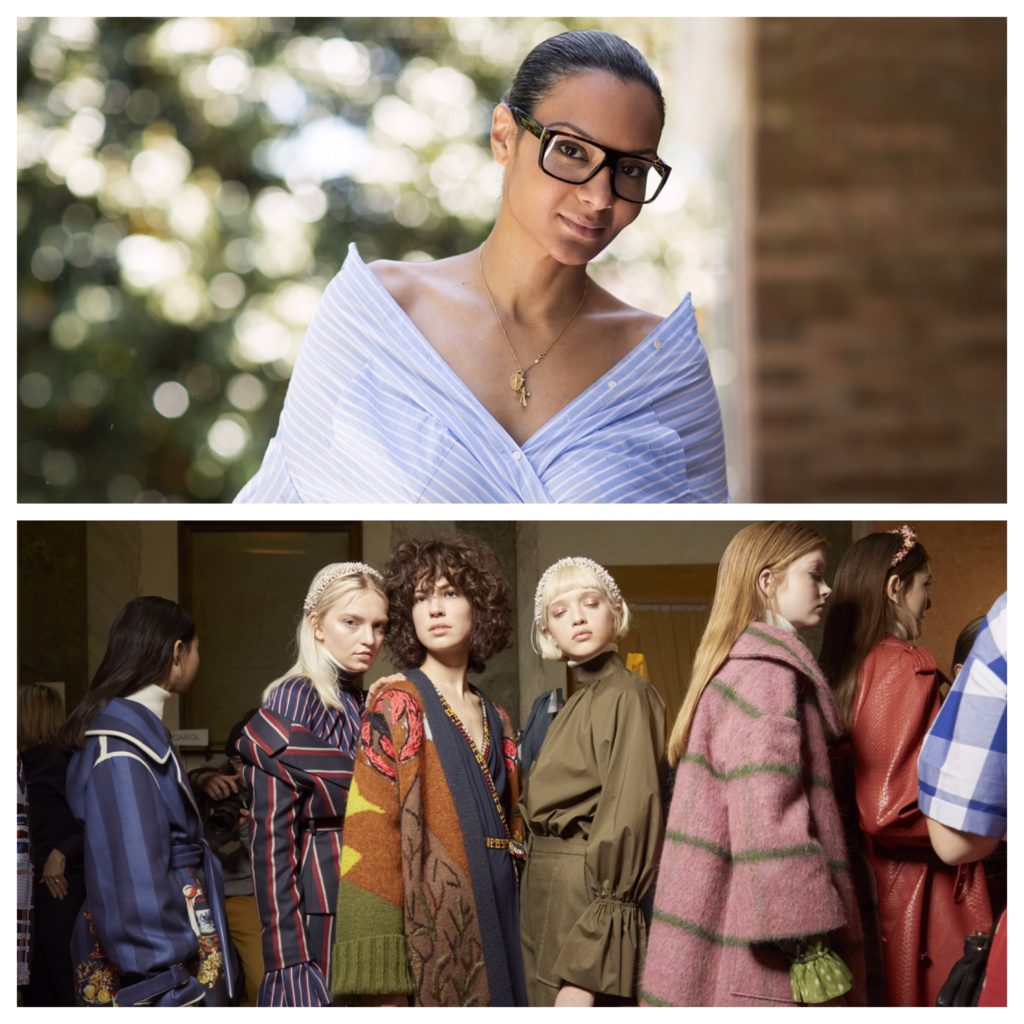
Leading Black fashion designers and black-owned luxury brands: Stella Jean. Courtesy Photos.
The designer made her intentions explicit, explaining backstage that this narrative was an observation that Europe does not hold a monopoly on significant cultural attractions. Tropical islands have value beyond sunny beaches: they also have “deep cultural, literary, and artistic histories.”
As the first black Italian fashion designer, Jean’s refreshing point of view is authentically translated in her garments, which never verge on caricature. Instead, she weaves a captivating global identity all her own.
7. Maxwell Osborne – Public School
Maxwell Osborne is one half of the New York-based label Public School. With his partner, Dao-Yi Chow, the duo have racked up multiple awards from the CFDA/Vogue Fashion Fund and the Woolmark Prize since their founding in 2008.
But don’t refer to their designs as “streetwear.” Osborne has said, “As a black man in an overwhelmingly white industry, race is never far from my mind.” He views the “urban fashion” labeling of their work as a pejorative term, meant to “pigeon-hole the talents of mostly black designers who held an aspirational yet utilitarian take on fashion.”
perfection in imperfection
Their design mantra “finding perfection in imperfection,” epitomizes the brand and its commitment to create high quality clothing. Most of their line is manufactured in New York City, supporting local tailors, pattern makers and garment workers.
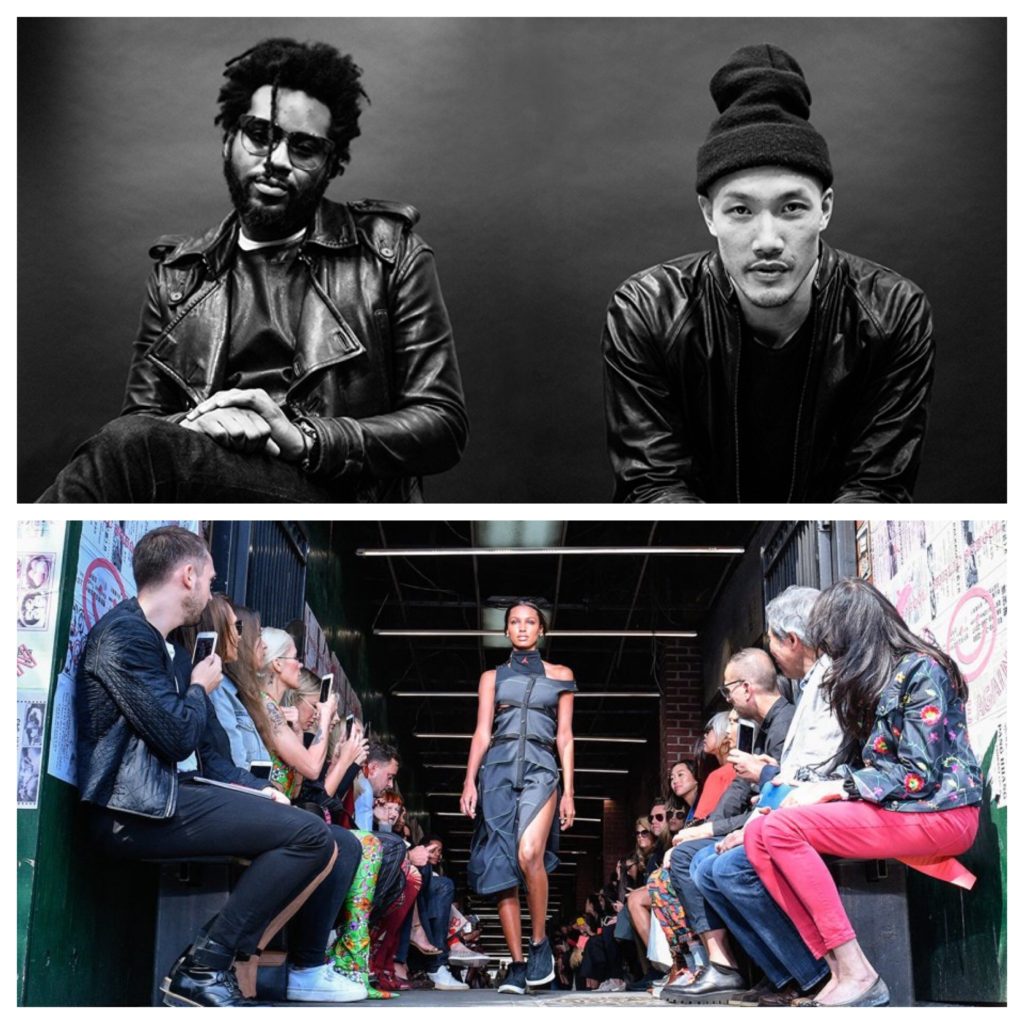
Leading Black fashion designers and black-owned luxury brands: Public School. Courtesy Photos.
Public School has not been afraid to make both covert and overt political statements over the years. In 2017, their red baseball caps with the slogan “Make America New York Again” were the hottest accessory of fashion week. Their 2018 Spring/Summer collection was an homage to immigrant communities, using Canal Arcade in Chinatown as the setting for their runway show.
This year, Public School is prioritizing social consciousness above all else, choosing to up-cycle or only use fabric made of recycled fibers in an effort to be more thoughtful about design and leave a smaller footprint on the environment.
8. Felisha Noel – Fe Noel
Felisha Noel, who started her label 8 years ago, is the first-generation daughter in a line of strong, entrepreneurial women from Grenada. This self-taught designer produces her collection of sensual and glamorous pieces in Brooklyn (one ensemble was recently worn by her ultimate inspiration, Michelle Obama).
She’s been getting much warranted buzz after presenting at Harlem’s Fashion Row in 2018. An alternative fashion show started by Brandice Daniel in 2007 to champion underrepresented black designers, this has become a launching pad and supportive community for black creatives.
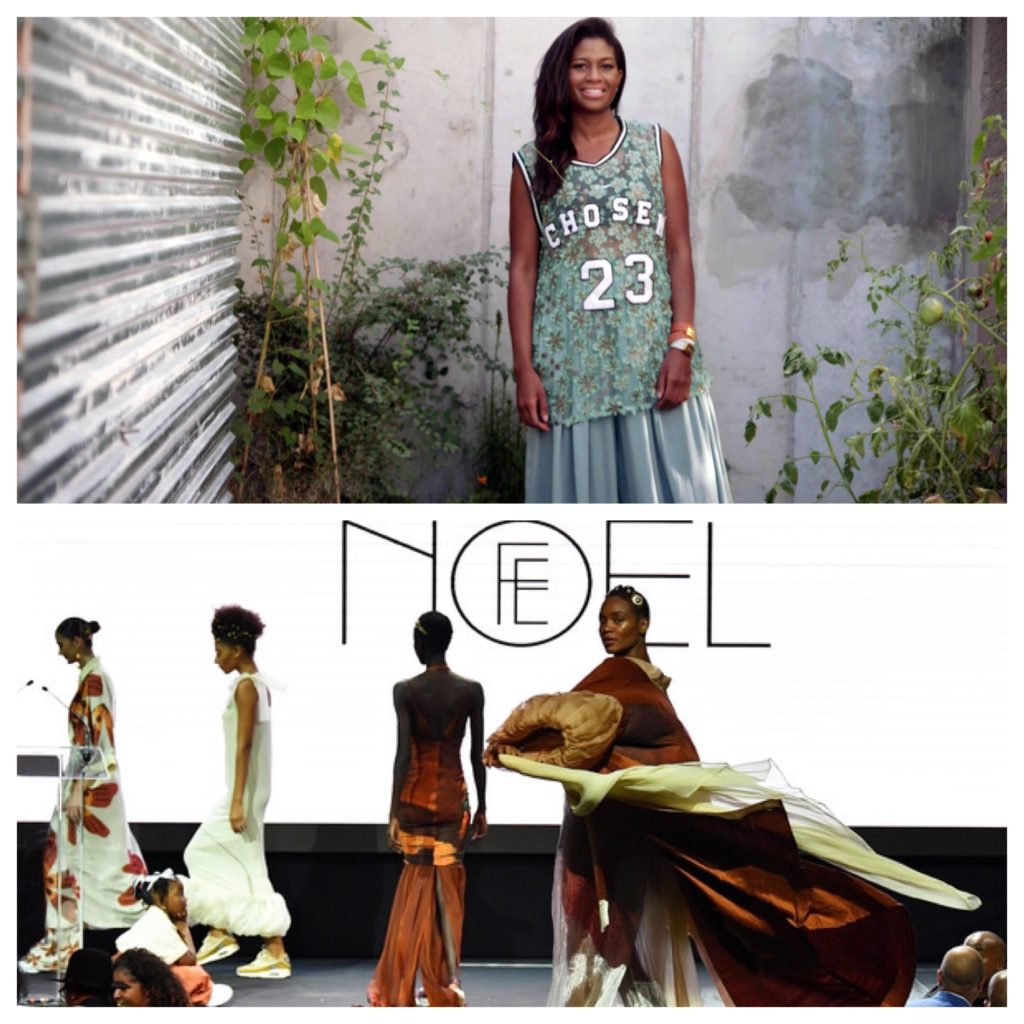
Top Black fashion designers and black-owned luxury fashion brands: Felisha Noel of Fe Noel. Courtesy Photos.
For Spring 2019, Noel collaborated with Afro-Cuban painter, Harmonia Rosales. The artist re-imagines classic renaissance paintings with black women as the icons. Typically erased from the collective consciousness, Noel presents black beauty front and center in a head-turning and feminine silk chiffon caftan and slip dress.
9. Shayne Oliver – Hood by Air (HBA)
The luxury cult streetwear brand Hood By Air (HBA) by designer Shayne Oliver, is coming back!
On hiatus since 2017, Oliver continued to work in fashion- most notably to design a collection for Helmut Lang. HBA embodied the luxury streetwear movement with its gender fluid garments, conspicuous logos and XXL silhouettes. And it was taken seriously in the fashion industry, winning the LVMH Special Jury Prize in 2014 and a CFDA award the following year.
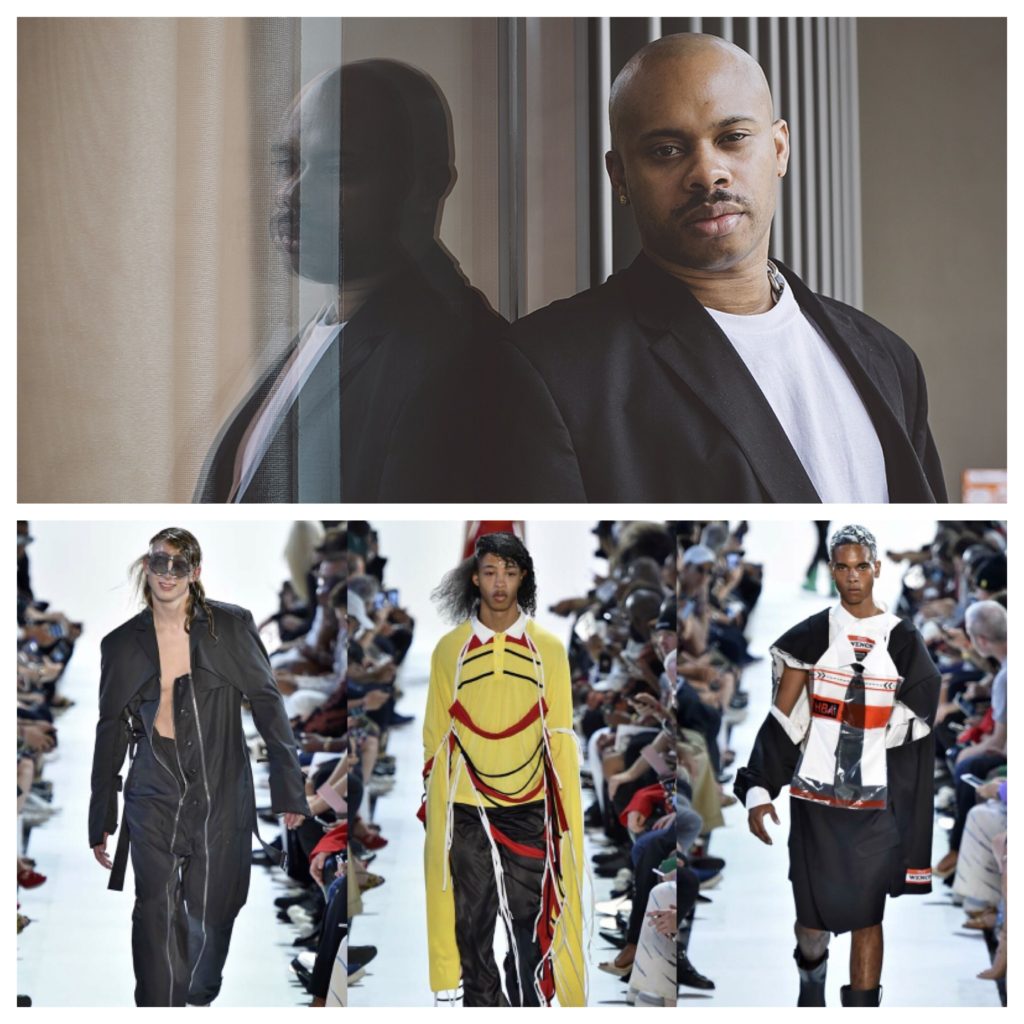
Top Black fashion designers and black-owned luxury fashion brands: Shayne Oliver of Hood by Air. Courtesy Photos.
Oliver is a first-generation American who made his way to New York after spending his youth in St. Croix and Trinidad. His attentive single mother nurtured his distinctive point of view and love of fashion, even going to work at Diesel so that they could receive a discount for the jeans he had been coveting.
His clothes are undeniably “masculine,” with themes of power and sexuality. Cathy Horyn, the legendary New York fashion critic, remarked that his designs were a “fist in your face” in an era in which bland international conglomerates control high fashion. Oliver brought his own brand of authenticity to luxury high fashion. We’re keen to see what his re-launch of HBA will look like in the coming months.
top black designers leading the way to a richer fashion narrative
It’s commonly said that fashion is a mirror of society. Up until now, the industry has mostly been reflective of a white, Euro-centric point of view. But these successful black designers are disrupting that narrative. And in turn, filling in the white spaces with more color, dimension and meaning.
join our community
For access to insider ideas and information on the world of luxury, sign up for our Dandelion Chandelier Newsletter here. And see luxury in a new light.
 Crediting her training as a cultural anthropologist at Wellesley College, Julie has immersed herself in various industries in the last 15 years including fashion design, event planning, fitness and even investigating police misconduct. Julie lives in NYC where she loves trying every ramen and dumpling restaurant with her husband and three children. She finds joy in bold prints, biographies of fierce women, kickboxing and spending way too long finding the perfect polish color to express her mood.
Crediting her training as a cultural anthropologist at Wellesley College, Julie has immersed herself in various industries in the last 15 years including fashion design, event planning, fitness and even investigating police misconduct. Julie lives in NYC where she loves trying every ramen and dumpling restaurant with her husband and three children. She finds joy in bold prints, biographies of fierce women, kickboxing and spending way too long finding the perfect polish color to express her mood.









